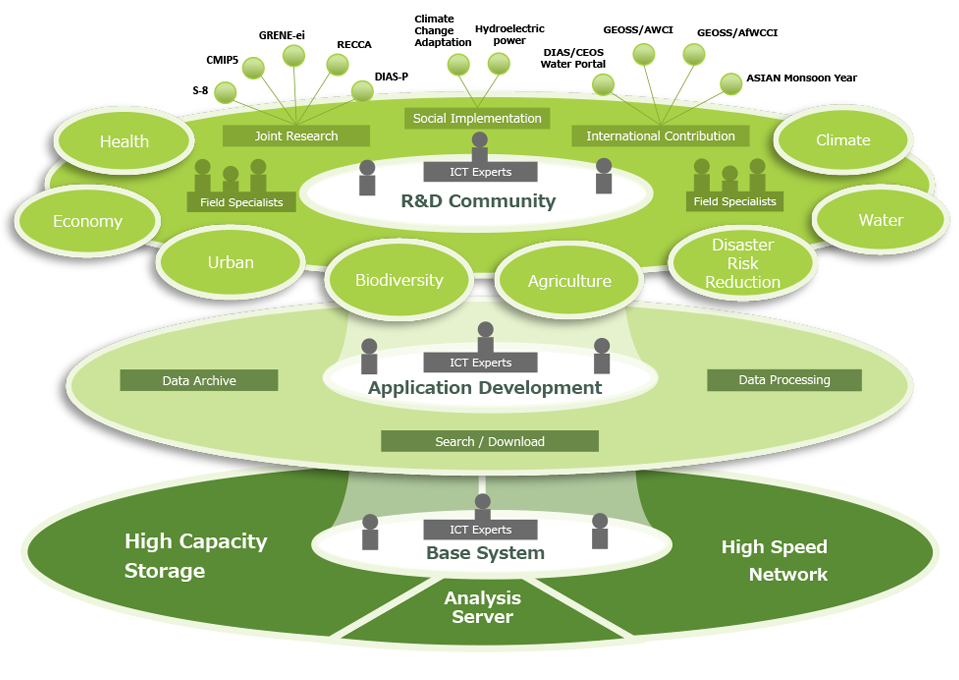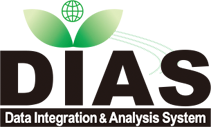
System Infrastructure
To archive, analyze, and simulate ultra-high volumes of data, DIAS has a massive data storage/analytical space totaling 100 Pb and an analysis cluster exceeding 16 cores x 200 nodes (as of March 2023). In addition, DIAS also connects to the Science Information Network (SINET), operated by the National Institute of Informatics, for high-speed data transfer with data centers and supercomputers at remote organizations.
The DIAS infrastructure system, which stores a robust database and an enormous analytical space, also provides various data processing applications and analysis tools in addition to the vast quantity of multidisciplinary global environmental data. Applicating this kind of integrated data infrastructure makes the superpositioning and related analysis of different datasets easy, and there is an expectation to enable the creation of new knowledge and services yet to be realized by isolated research. It will also be possible to reuse tools developed for some objective for another objective, opening the path to horizontal expansion across disciplines. Ultimately, you can consider the DIAS infrastructure system to be based on a growth-type database and analytical space and to possess a structure whereby applications are expanded and enhanced in a virtuous cycle in the community
Applications and Tools
The DIAS applications and tools are the software and services packaged on the infrastructure system that implement data storage/search, analysis, visualization, and other functions planned and produced cooperatively by scientists working in data and other fields, with the objective of creating scientific knowledge and finding concrete solutions to global environmental and local social issues. These applications and tools not only simplify access to global and regional environment data sets, but are also equipped with functions that specify a temporal or spatial range of interest to the user.
Research and Development Community
DIAS promoted R&D projects across several fields of research and achieved support of research, social implementations, social contributions interdisciplinary. In addition, DIAS organizes events about twice a year to active communication among DIAS users including the researchers of different fields.



